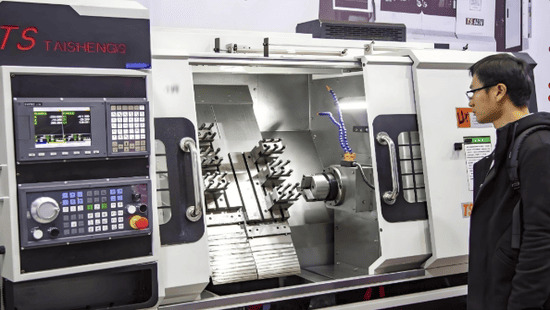The Evolution of CNC Lathes
1.From Iron Monsters to Intelligent Machines
The lathe is an old beast — first built in the 1700s. But the CNC lathe, as we know it today, began to form in the 1950s with the birth of numerical control.
It combined the muscle of old-school turning with the brain of automation. It was never just about cutting — it was about cutting with purpose, repeatability, and precision.
2. 1950–1970: The First Step from Manual to Programmed
In 1952, MIT and the U.S. Air Force co-developed the world’s first numerically controlled mill. By 1959, CNC lathes appeared — gigantic, costly, and unstable.
In the 1960s, an average CNC machine cost $25,000 (about $250,000 today).They used punched tape, required an entire room to operate, and were only found in military or aerospace sectors.
3. 1970–1990: China’s First Footsteps
In 1974, Beijing Machine Tool Institute developed China’s first prototype CNC lathe — basically a manual lathe retrofitted with analog servos.

4. 1990–2010: Intelligence Meets Localization
This was the golden age of two things: smarter machines and homegrown systems.
Chinese brands like GSK, KND, Huazhong emerged, while international players (FANUC, Siemens, Mazak) brought in multi-axis and graphical interfaces.
We started seeing:
Sub-spindles for dual-face machining
Live tool turrets for drilling/milling
Y-axis control for angled features
In 2008, China produced 86,000 CNC machines. Nearly half were turning centers.
This era gave birth to a new job: the CNC generalist — someone who could read drawings, program code, set tools, and troubleshoot signals.
5. 2010–Now: Automated, Networked, AI-Enhanced
Since 2010, CNC lathes evolved from “smart standalone machines” to cloud-connected manufacturing nodes.

Dual-channel & dual-turret
Machines now run two tools at once, doubling throughput. We used one Mazak Integrex to cut a 3-process aerospace joint down to 1.
IoT-compatible
Modern CNC lathes support OPC UA, send data to MES, and allow remote monitoring of toolpath, wear, energy usage.
Adaptive control
Systems now detect tool wear, heat expansion, or chatter — and adjust automatically.
According to China CNC Industry White Paper 2023:
Today’s high-end CNC lathes reach ±2μm precision and Ra < 0.2μm surface finish.
6. Summary: From Craftsman’s Hand to Industry’s Brain
I don’t see CNC as replacing the craftsman. I see it as amplifying human capability.
Era |
Feature | Hallmark |
|---|---|---|
| Manual | Human-driven | CA6140, Soviet style |
| Basic CNC | Code-driven | G-code, floppy |
| Intelligent | Multi-axis, graphical | C/Y-axis, live turret |
| Networked | Cloud + compensation | MES, OPC UA |
7. Final Words
I’ve seen million-dollar machines turn out junk. Not because the lathe failed — but because the operator didn’t know how to use it.CNC lathes are built on decades of failure, learning, refinement. Every time you press Cycle Start, you’re standing on history.

